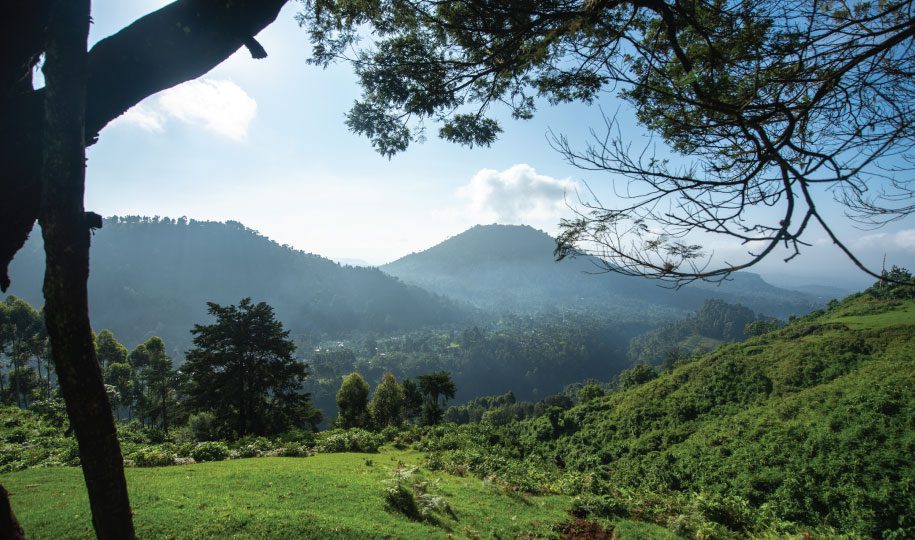Meru Forest
- Home
- Meru Forest
MERU FOREST
“A natural paradise of Arusha, awaiting you to explore”
Located in Northern Tanzania on the slopes of Mount Meru third highest mountain in Sub-Saharan Africa (2nd highest peak in Tanzania) is found on the outskirts of Arusha city ˝Geneva of Africa˝. Meru-Usa Forest Plantation is a definite place for all your eco-tourism adventures. It’s a rewarding experience while in ‘Arusha’ the gateway to the greatest game parks in the world, to leave your 4X4 and hike on lush green slopes of the mountain or jump on a forest cycling adventure before visiting the parks like Serengeti and Ngorongoro crater.
The Meru/Usa Forest Plantation is part of the Meru Forest Reserve (26,000ha) which was gazetted in 1920 by general notice No. 232. Between 1930’s-. Meru Forest Reserve was gazetted with the purpose of protecting the natural forest for soil and water conservation along the upper and middle slopes of the mountain. It is managed by the Tanzania Forest Services Agency (TFS) under the Ministry of Natural Resources and Tourism.
Climate
Generally, the climate of Meru-Usa Forest is characterized by relatively low temperatures. The temperatures range from 15 0C to 28 oC with very divergent wet and dry seasons. It is also characterized by its bi-modal rainfall pattern with two rain seasons, one being the heavy rains named locally ‘Masika’ and short rains named ‘Vuli’. The long rains shower between March and May while short rains are always showering between November- December seasons.
Elevation
The forest reserve lies between 1400m above sea level with the highest point being 2300m above sea level.
Location and Size
The plantation covers an area of 8170 hectares and is located in the Arusha region about 5 -10 km from Moshi – Arusha – Nairobi highway’s Northern side. The forest lies between 3015’-3018’ South and longitudes 36041’-36042’. The forest borders the Arusha National Park to the North while all of the Southern parts border the local villages of Olgilai, Sura, Kilinga, Ngongongare, Sakila, Oldonyo sambu, Olmotonyi, and Timbolo.
Accessibility
Meru Forest Eco-tourism Coordination office is located 12 km North-West of Arusha town. A number of commuters (locally known as Dala dala) ply the way from Arusha to Ngaramtoni. From Ngaramtoni one can take a taxi or walk through the Forest Road heading north for about 30 minutes to the Meru Forest Eco-tourism office.
Other visitors can access the forest through Sekei road, heading north to Olgilai village where an entrance gate has been installed. The entrance is 7 km from the Arusha Clock Tower and takes 10-20 Minutes by private/hired taxis.
Tourist Attractions
Common birds
The forest harbors over 300 species of birds ranging from forest birds, and water birds to game birds Common birds include; Turacos, Trogons, Hornbills, bulbuls, Oriole, Woodpeckers, Sunbirds, Starlings, Swifts, Doves, Pigeons, Ibis, Egrets, Herons, Bee-eaters, White-eye, and so much more colorful birds.
Common flowers
The forest is decorated by flowery forbs and herbs ranging from Purple lady, Fireball Lily, Periwinkle, Arrow poison plant, Ajuga, Aloe, Asparagus, Aspilia, Carissa, Candle bush, Angel’s trumpet, Butterfly flower, Flame lily, Leonotis, Lipia, Four Oclock Plant, Ocimum, Plecanthus, Castor oil plant, Teclea, Vernonia, red cherry and Jasmine just to mention a few.
Primates
Black and white colobus monkeys, Blue monkeys, and Baboons (olive baboons).
Reptiles, Insects, and Amphibians
Some reptiles are chameleons, snakes, toads, frogs, and different types of insects like grasshoppers, butterflies, spiders, and others.
Waterfall
4 sites of waterfalls (Themi/Napuru Waterfalls, Narok, Sambasha Waterfall, Midawe Waterfall.

Scenic areas
Kona ya Idd Amin, dense natural forest, Wasafa viewpoint, Kona ya Manyani viewpoint, Mmatako Hill View Point, and Sambasha Hill viewpoint.
Cultural attraction
Maasai Boma, Cultural Music &traditional Dancing, Local food (Traditional food), and masala Artifacts (Souvenirs).

We offer the following tours (Activities)
- Mount Meru Forest Nature Walk
- Forest Silent walk and meditation
- Hiking to the waterfalls
- Sambasha Hill Hiking
- Cultural Tours in Maasai & Meru Villages
- Bird Watching
- Meru Forest Cycling Tours
- Weekend Specials & Silent Forest Walk
- Kilimanjaro Trekking Acclimatization Programme
- Be part of our carbon offsetting project: A tree for every visitor
- Volunteer with us in forestry activities, eco-tourism promotion, community development, education, and health sectors
- Picnic sites for outdoor leisure and recreation
- Api-tourism (beekeeping or Apiculture)
Picnic sites
Spectacular picnic sites are available for those who bring their drinks and bush lunch. The sites are installed with basic facilities for your adventure. We apply the principle of ‘TRASH-IN TRASH–OUT’. Visitors are advised to avoid littering in the forest.

Volunteering opportunities & Projects
Meru Forest eco-tourism offers so many opportunities for voluntary work within its borders and around the community working hand in hand with the organization for environmental protection and economic development. Prior work experience is absolutely not required to become a volunteer. We welcome volunteers from all over the world to come and work with us on a short and long-term basis. To get volunteers ready for the work and acclimated to a new environment, our organizing team offers 3 days of orientation at the beginning of the assignment to help volunteers understand their chosen voluntary area, culture, and language in Tanzania. We offer volunteering in the fields of forestry, teaching working alongside builders for local school classrooms, midwifery/nursing in our local dispensary, microfinance, community village projects development and promotion.

Community Activities
Our forest is surrounded by local communities mostly the Wameru and Waarusha tribes. You have a great opportunity to interact with locals during your visit as well as learn their way of life. Visit different sites used for rituals and other tribal activities in the forest and listen to hair-raising stories from the warriors, women, and children born and raised in rural villages.


